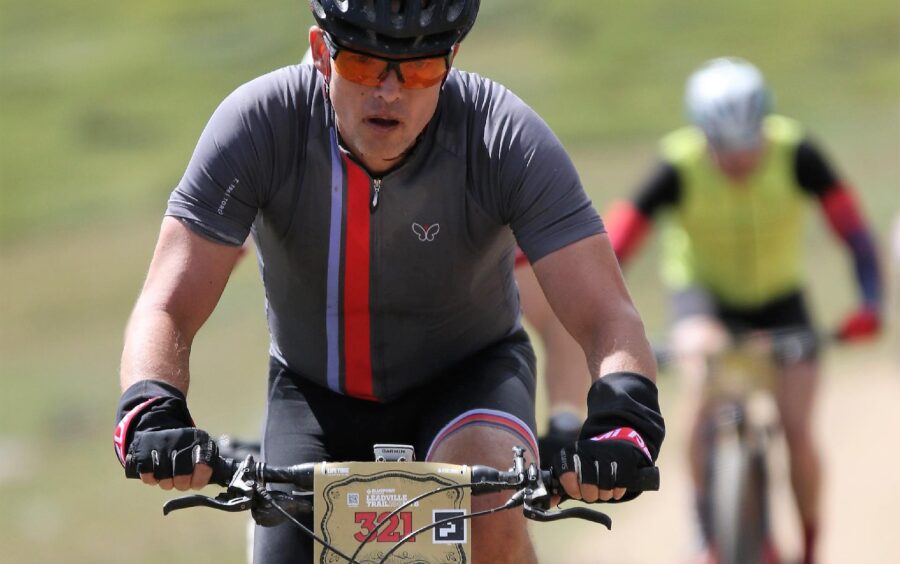Traveling with a lot of athletes at all different levels in the last decade, and being one in a lot of different scenarios and styles of racing, interviewing hundreds of pro racers and coaches, living with pros (including my husband, a pro MTBer and a great coach!), getting my coaching and nutrition certifications and generally studying the ways that athletes thrive—and don’t thrive—has given me a lot of food for thought this year. So, I decided I wanted to work on a series of articles on here highlighting some of the commonalities that I’ve noticed that the highest achievers in sport are consistently doing, whether it’s a race week, a training camp or just day-to-day life.
I wanted to start with the one that I see people make a ton of mistakes on, at all levels. And for good reason: It can be a hard one to stick to. So, Habit #1:
Habits of Highly Effective Athletes #1: Stay in Your Lane
I’m not just talking about in the pool (although that’s just good common sense). I’m talking about this:
“What’s your workout today?”
“2 hours of intervals. You?”
“3 hours of intervals.”
Narrator: “It wasn’t.”
So, to back up, this was the conversation that I heard pretty much every morning when I was coaching a camp a couple years ago, and then what I heard when we stayed in a house filled with (young) pro racers. That second guy in the conversation, the one who now has ‘3 hours of intervals,’ actually was supposed to do a 90 minute recovery spin. (I know this because I was in contact with his coach.)
He didn’t. Pretty much every day, I’d see an example just like this, whether it was before a ride, when a guy (or girl) would take the longer/harder ride option because someone else (usually a primary competitor) was doing that ride, when they were supposed to be doing a much easier day. It also would happen in-ride: one guy would have X intervals, and the guy with him that had endurance, or a totally different workout, would end up killing himself to match Guy #1’s workout… despite the fact that it wasn’t a workout for him.
By comparison, the most successful young athletes that I’ve seen stuck to their rest days suggested by coaches—didn’t add rest days or bow out of workouts, just took the rest days given—and focused on what mattered: their own progress.
The athletes who succeed aren’t the ones who switch their workouts to match / try to show up their fellow racers in training.
The athletes that I’ve seen be successful and stay successful are the ones who listen to their bodies, report the data to their coaches, and do the training that makes sense for them. They aren’t persuaded to take up running two days before a cyclocross race because a teammate is on a running program, they aren’t adding an extra hour to a workout because a competitor isn’t turning around on the group ride.
Good athletes stay in their lane. That isn’t to say an athlete shouldn’t change his or her training if it isn’t working! The most successful athletes I’ve seen training are the ones willing to change—but to do so thoughtfully, and not drastically. As someone who loves a good makeover montage, I personally can find this difficult. I want to go from 0 to 100 really quickly, from the beginner to the expert line, from the aquajoggers to the fast lane immediately. But that’s pretty much always a recipe for disaster across the board, from endurance training to strength training to diet.
On that note, when I wrote Fuel Your Ride, one of the major things I noticed was that every pro that I interviewed had experimented with diet a lot—tweaking often—based on new research, but also based on personal experience and preference. Again, I see this playing out terribly at training camps, where otherwise dialed athletes are suddenly jumping into intermittent fasting, messing with macronutrient ratios, copying a fellow rider’s attempt at a Paleo or raw vegan diet… and pretty much always tanking. Diet change, like any training stimulus, needs to be adapted slowly, especially during a major training block. The athletes that I’ve seen make major changes in season or in base training are the ones who end up with gut issues, energy problems, nutrient deficiencies, and trouble with recovery.
Again, not to say that an athlete can’t—or shouldn’t—change his or her diet… Athletes just need to make changes slower, and really assess what’s working on an individual level. Just because a teammate goes gluten-free or tries out intermittent fasting doesn’t mean you should. (It doesn’t mean you shouldn’t, but ‘because my friend is doing it’ has never been/will never be a good justification for something.)
Make changes slowly and purposefully. Know why you’re going to tweak a training plan, and make sure that decision is being made based on your needs, not on your ego. Know why and how you’re going to change your diet, and do so slowly, assessing how your stomach feels, how your energy levels feel, and how your training is being impacted. Be aware of your body—not the rider, runner, swimmer, competitor next to you. We can learn a ton from each other, but the mark of a successful athlete is when he or she can see others doing things differently, look at each thing objectively, and make an informed decision, not an irrational, emotional one.
That’s Habit #1—stay tuned next week for Habit #2! I’ll be doing this every Monday for the next two months, and if you want to make sure you never miss one, sign up for the newsletter!
Speaking of habits… want a free 7-day guide to healthy, reasonable habit change? Sign up here!





